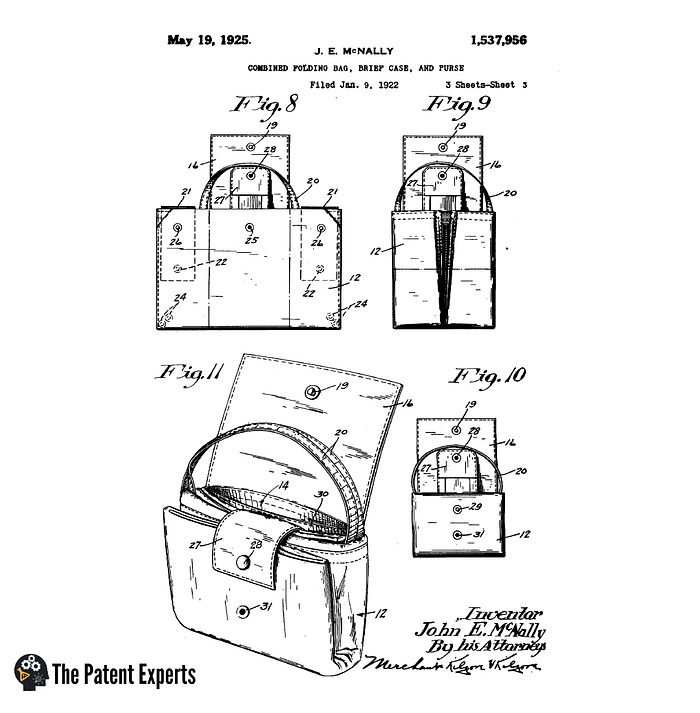Provisional Patent Application Drawing | The Patent Experts
Introduction
If you wish to protect an inventive invention, filing a provisional patent application is an important first step. A provisional patent application is a placeholder for your invention that establishes an early filing date and allows you to further develop your concept before filing a non-provisional patent application. A provisional patent application must have a drawing as one of its basic elements. This article will walk you through the process of creating a provisional patent application design that accurately reflects your innovation.
Importance of Provisional Patent Application Drawings
Provisional patent application illustrations are essential for visually representing your invention. They assist patent examiners and potential investors in better understanding your invention’s distinctive characteristics and usefulness. Clear and well-executed drawings can increase the likelihood of your provisional patent application being accepted and serve as solid evidence to support your claims.

Understanding the Requirements for Patent Drawings
When developing a provisional patent application drawing, it is critical to follow the patent office’s specifications. These requirements ensure that the drawings accurately show the invention and are easily understood by anybody evaluating the application. Some important guidelines are as follows:
- Drawings should be in black and white, with shading added as needed.
- Make use of lines and symbols that are clear, exact, and consistent.
- Use reference numerals to label various components.
- Make certain that the drawings are of excellent quality and resolution.
- Avoid including text or descriptions in your drawings.
Tools and Software for Creating Patent Drawings
Patent drawings can be created utilizing a variety of techniques and software. You can select from the following options, depending on your preferences and expertise:
- Traditional Hand Drawing: Using drafting equipment and materials such as pencils, rulers, and tracing paper to create a drawing.
- Computer-Aided Design (CAD) Software: Using specialized software such as AutoCAD or SolidWorks to create precise and professional drawings.
- Patent Drawing Software: Using specialized patent drawing software such as TurboPatent or PatentEasy, which provide tools and capabilities designed specifically for patent illustrations.
Choosing the proper tools is critical to ensuring the accuracy and quality of your provisional patent application artwork.
Steps to Create a Provisional Patent Application Drawing
- Determine the Type of Drawing You Need
Determine the type of drawing required for your innovation before beginning the drawing process. It can be an isometric image, a cross-sectional view, an exploded view, or any other type that best illustrates the distinctive features of your innovation.
- Make Use of Accurate Measurements and Scales
In patent drawings, measurements and scale are critical. To ensure that the proportions and dimensions appropriately reflect the invention, use precise measurements. A scale indication is also necessary for reference.
- Concentrate on Clarity and Detail
Clarity and detail are required to portray the distinctive characteristics of your idea. Make sure your drawing clearly depicts each component, stressing the innovative features and functioning. To distinguish between elements, use different line types and thicknesses.
- Incorporate Multiple Views if Necessary
Include numerous angles or views in your sketch if your innovation demands them to effectively show its aspects. Multiple perspectives serve to provide a full understanding of the invention and to demonstrate its various characteristics.
- Make use of solid lines and shading. Appropriately
To illustrate visible edges and surfaces, use solid lines. Dashed or broken lines can be used to represent hidden or non-visible items. Shading can be used to improve the three-dimensional illusion, particularly in cross-sectional and isometric views.
- Label and Annotate the Drawing
Labeling and annotating your drawing is essential for clarity and understanding. To identify distinct parts and components, use reference numerals. Make a separate legend or key that explains the meaning of each numerical or symbol in the drawing.
Hiring a Professional Patent Illustrator
While creating provisional patent application drawings yourself is doable, engaging a professional patent illustrator can ensure the highest level of accuracy, compliance with patent office rules, and overall aesthetic appeal. Patent illustrators have the knowledge and experience to design drawings that accurately reflect your innovation and increase its chances of success.
Conclusion
Creating a well-executed provisional patent application drawing is critical for protecting your invention and increasing its chances of success. You can successfully illustrate your idea through visuals if you follow the rules, use precise measurements, pay attention to clarity, and pay attention to detail. Consider employing a professional patent illustrator for the best results. With a detailed drawing, you are one step closer to protecting your creative concept.
Get instant access to useful information and expert advice on filing provisional patent applications. To take the next step in protecting your invention, click on the linked link.
